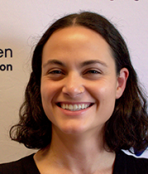Hammer Time: Using the Schmidt Hammer to Improve the Rockfall Activity Index (RAI) Forecasting Accuracy
PI: Margaret Darrow (UAF), margaret.darrow@alaska.edu, ORCID: 0000-0003-4078-4746
Co PIs: none
AMOUNT & MATCH: $60,000 from PacTrans; $60,000 Match
PERFORMANCE PERIOD: 3/16/2022 – 3/15/2023
STATUS: Completed
CATEGORIES: Rockslopes, Geotechnical
DESCRIPTION: Dr. Darrow is part of a research team that received PacTrans support in 2020 to modify the rockfall activity index (RAI – an approach that members of the research team developed) to account for rockfall attenuation after earthquakes. The RAI can be used as a tool by engineers to understand the relative risk between rock slopes and which slopes are best suited for mitigation. In 2021, our research team received notification that we received additional PacTrans support to improve and refine both the accuracy and the interpretation of the RAI analysis to promote its wider adoption by transportation authorities and consulting engineers in the PNW and across the nation (project title – “A RAI of Data: Generalizing the Data-driven Rockfall Activity Index (RAI) based on Long-term Observations of Well Characterized Slopes”.
This proposed small project will complement the funded “A RAI of Data” project by measuring the accuracy and repeatability of Schmidt hammer data to determine rock strength and weathering conditions, using sites in Alaska and Oregon as a case study. The project will represent a key component of a graduate student’s thesis, who will be responsible for performing the work. The results will be incorporated into the RAI procedure to conduct “hotspot” mapping, thus improving the accuracy of the RAI methodology.
| DELIVERABLE | DUE DATE | DATE RECEIVED |
| Research Project Progress Report #1 | 10/10/2022 | 10/10/2022 |
| Research Project Progress Report #2 | 4/10/2023 | 4/11/2023 |
| Draft Report | 4/30/2023 | 7/6/2023 |
| Final Project Report | 6/30/2023 | 12/4/2023 |


